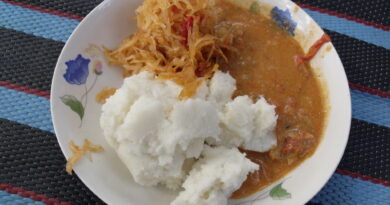Pap
The Versatile Wonder: Exploring the World of Pap
Introduction: Pap, a dish as old as civilization itself, has been a staple in diets across various cultures for centuries. From ancient times to modern kitchens, this simple yet versatile dish has found its place on tables worldwide. In this comprehensive exploration, we delve into the origins, variations, and cultural significance of pap, uncovering why it has remained a beloved culinary tradition through the ages.
Origins of Pap: The origins of pap can be traced back to ancient civilizations, where it was a dietary mainstay due to its simplicity and nutritional value. ancient Egyptians, for instance, consumed a form of pap made from grains like barley and wheat. It served as a reliable source of sustenance for workers constructing the grand pyramids and navigating the Nile.
Similarly, in other parts of the world, such as Africa and South America, indigenous communities relied on pap as a dietary staple. In Africa, maize-based pap, known as “sadza” or “ugali,” remains a fundamental part of many regional cuisines. Its significance extends beyond mere sustenance; it symbolizes community, tradition, and cultural identity.
Varieties of Pap: Pap comes in various forms, each reflecting the unique culinary traditions and available resources of different regions. In South Africa, “mieliepap,” made from maize meal, holds a special place in the hearts of many. It can be served as a porridge-like consistency or molded into firm cakes, depending on personal preference and culinary tradition.
In Latin America, a similar dish called “arepas” is prevalent, particularly in countries like Colombia and Venezuela. Made from cornmeal, arepas are versatile and can be enjoyed plain, stuffed with savory fillings, or topped with cheese and sauces.
Moving to Asia, rice-based pap varieties such as congee in China and rice porridge in Southeast Asia demonstrate the adaptability of this dish across different cultures. Whether enjoyed as a comforting breakfast or a soothing remedy during illness, rice-based pap holds cultural significance in these regions.
Modern Interpretations: While pap has deep roots in tradition, modern chefs and home cooks continue to innovate, creating new and exciting interpretations of this timeless dish. In upscale restaurants, pap may appear as a sophisticated side dish, paired with gourmet ingredients like truffles or exotic spices.
Moreover, with the rise of health-conscious eating habits, pap has undergone a resurgence in popularity. Whole-grain varieties, such as quinoa or buckwheat pap, cater to those seeking nutritious alternatives without compromising on flavor or texture.
Cultural Significance: Beyond its culinary appeal, pap holds significant cultural and social meaning in many societies. In African cultures, the preparation and sharing of pap often accompany communal gatherings, celebrations, and rites of passage. The act of cooking and serving pap becomes a ritualistic expression of hospitality and togetherness.
Similarly, in Latin America, arepas are a symbol of national pride and culinary heritage. They serve as a canvas for showcasing local ingredients and flavors, reflecting the rich tapestry of Latin American cuisine.
Health Benefits: Despite its humble origins, pap boasts several health benefits, making it a nutritious addition to any diet. Rich in carbohydrates, pap provides a sustained source of energy, making it an ideal choice for fueling active lifestyles. Additionally, depending on the ingredients used, pap can be a good source of fiber, vitamins, and minerals, promoting digestive health and overall well-being.
Conclusion: In conclusion, pap transcends geographical boundaries and cultural differences, uniting people through its simplicity and versatility. From ancient civilizations to modern kitchens, this humble dish has stood the test of time, adapting to changing tastes and preferences while retaining its fundamental essence. Whether enjoyed as a comforting breakfast, a hearty side dish, or a gourmet delicacy, pap continues to captivate palates and inspire culinary creativity across the globe.



